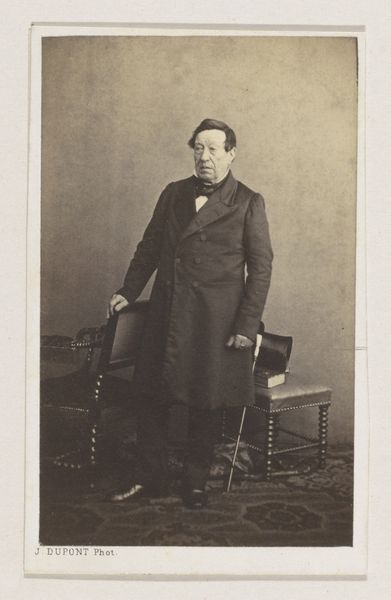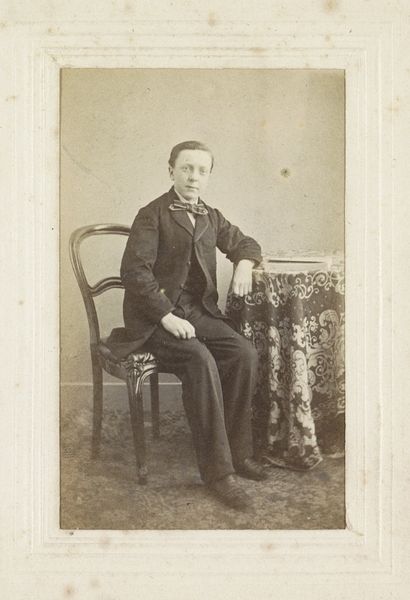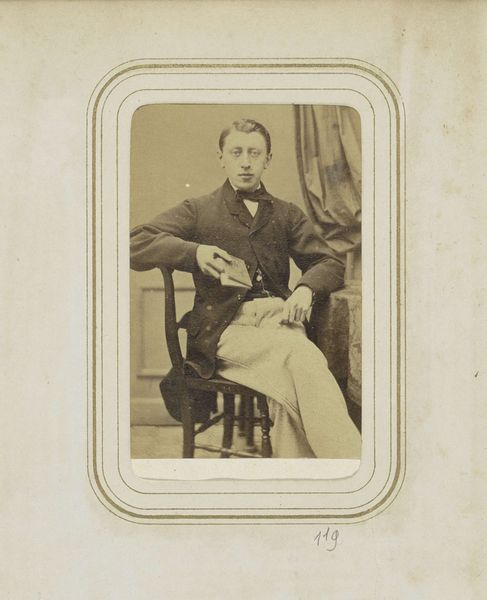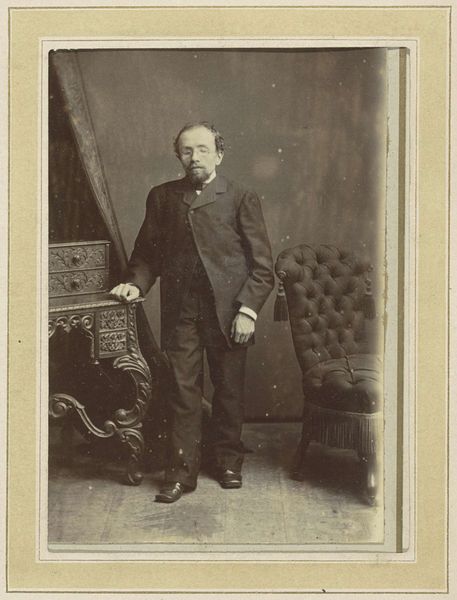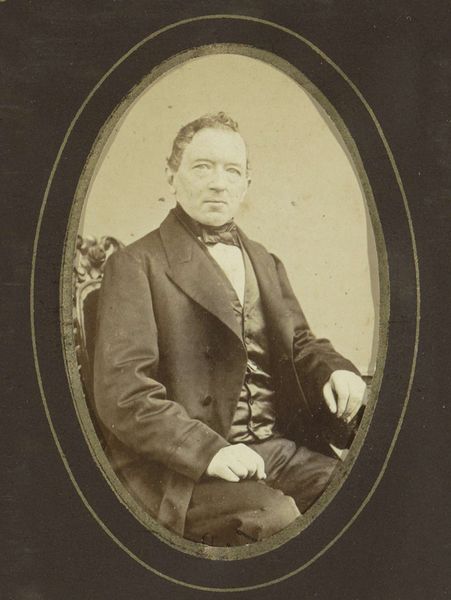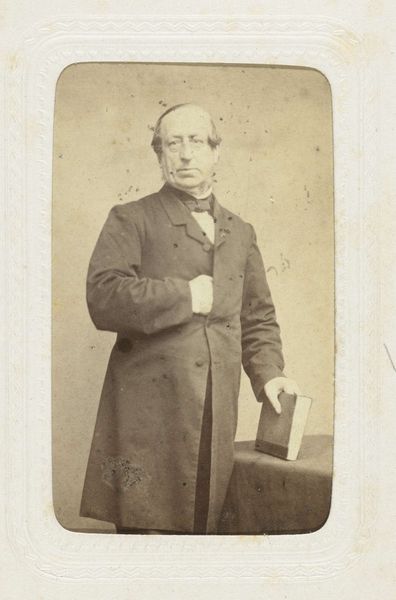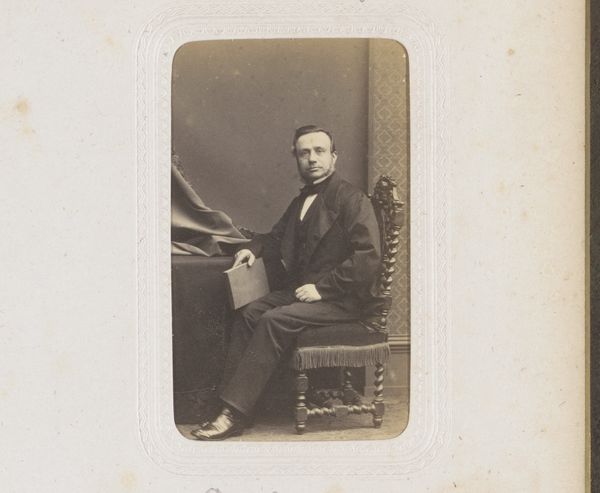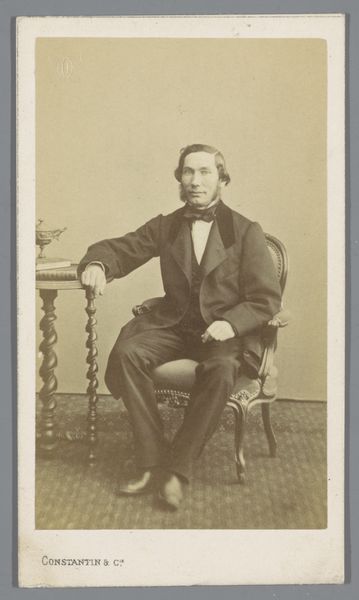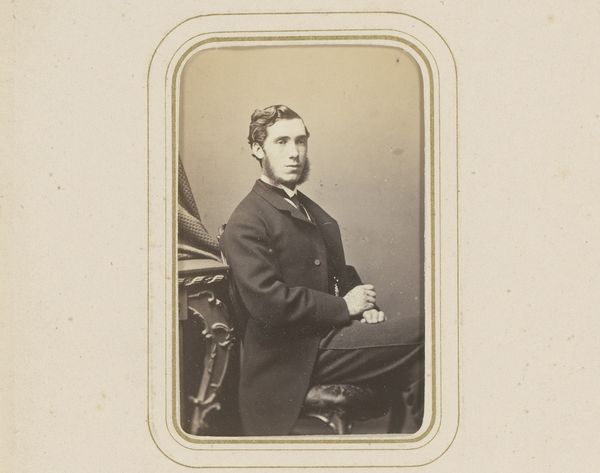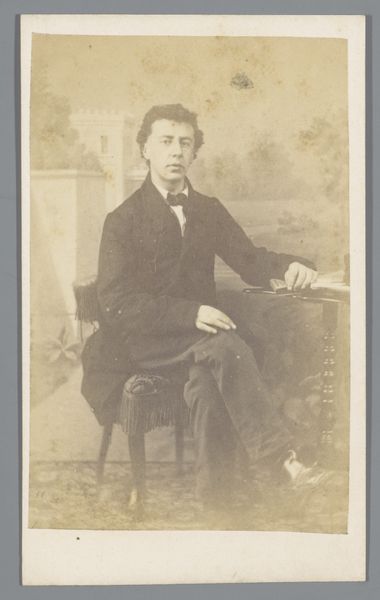
daguerreotype, photography
#
daguerreotype
#
photography
#
19th century
#
genre-painting
Dimensions: height 80 mm, width 54 mm, height 296 mm, width 225 mm
Copyright: Rijks Museum: Open Domain
Curator: Here we have an interesting studio portrait, "Studioportret van een man met een snor," created by Theodor Brüggemann sometime between 1863 and 1866. It’s a daguerreotype. Editor: It possesses such a somber air! Even with him posed in a chair with his hand jauntily in his pocket, there’s an undeniable weight. The sepia tones only deepen the effect. Curator: The choice of daguerreotype really impacts how we read this piece. Consider its historical moment: photography’s democratizing effect meant portraiture became available to a wider spectrum of the rising middle class, who aspired to visibility. It disrupts notions around exclusive social status. Editor: I’m struck by his carefully cultivated image – that meticulously styled mustache and side swept hair. His very dark jacket, the high collar. And what of the tie knotted just so, suggesting, what, an artist, a banker, or a poet maybe? Curator: Absolutely, the subject makes intentional choices. These markers, viewed through a contemporary lens, raise questions of performance and constructed identity. He wants to say something about who he is, what is allowed and promoted for masculinity, for class ascendance, right? Editor: Symbols were everything then, of course, embedded within larger systems of belief. I keep coming back to the chair itself as more than a simple prop, it is richly crafted and carved, becoming a silent statement piece. Comfort, class, luxury—each speaks to aspirations of identity in its own way. Curator: I agree; reading those symbols—the clothing, the chair— against the grain of social history exposes how power circulates through representation, making us consider how much those structures still persist. It is through understanding visual histories that one begins to interpret current narratives that still operate through images. Editor: A rather effective capsule of cultural posing! We can draw so many threads from what seems, at first, like a rather conventional portrait. Curator: Exactly, it demonstrates how deeply even the most straightforward image participates in complex dialogues.
Comments
No comments
Be the first to comment and join the conversation on the ultimate creative platform.
